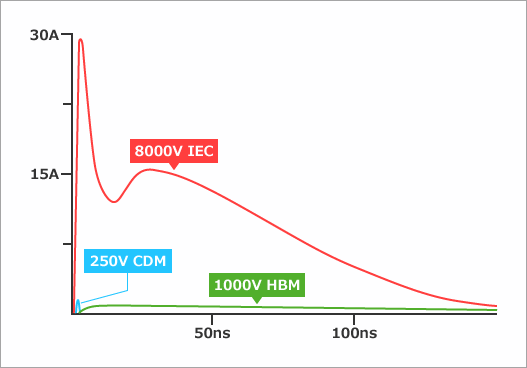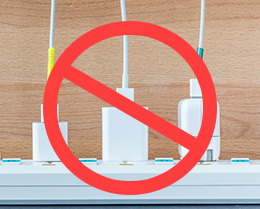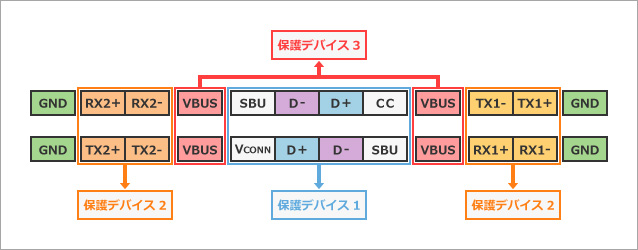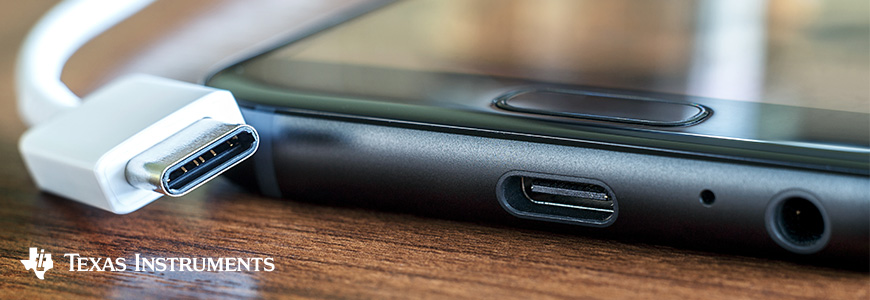What kind of troubles are expected to protect the final product?
Equipment equipped with a USB Type-C connector/receptacle (hereinafter abbreviated as USB Type-C connector) that features a plug that can be turned upside down and a cable that can be turned upside down, mainly for laptop computers and peripheral USB devices. It's getting more and more to see.
On the other hand, the USB Type-C connector is smaller than the conventional USB connector, and it is related to a new standard called USB Power Delivery, so it should be considered from the perspective of protecting the final product. I have a point to make.
In this article, we will explain the design points to prevent possible troubles when installing a USB Type-C connector. First, let's take a look at three common causes of problems.
Three typical trouble factors
1. Static electricity applied from the USB Type-C connector
Type-C devices (Type-C/PD controllers, etc.) in the equipment that are directly connected from the USB Type-C connector have a certain level of electrostatic resistance (HBM, CDM), but this standard is It does not guarantee protection from static electricity.
Since the final product must have an ESD withstand voltage compliant with IEC61000-4-2, a "dedicated ESD protection device" is required.

2. Possibility of pin-to-pin contact due to close arrangement of pin pitches
Although the USB Type-C connector is smaller than the conventional USB Type-A, the number of pins has increased to 24. (see below)

As a result, (physical) twisting or horizontal misalignment during insertion or removal, or adhesion of moisture or metal fragments, etc., can cause a short circuit between the pins, leading to damage to the internal system.
Since the CC and SBU pins may touch VBUS pins up to 20V for power delivery, a “VBUS short circuit protection device” is required for those pins.
3. Connection with products that do not meet USB Type-C/Power Delivery specifications

Before I explain the third, I will first explain USB Power Delivery. USB Power Delivery (hereafter PD) is a USB power supply standard that can supply up to 20V/5A (100W).
When connecting a USB adapter that outputs 20V before PD negotiation (not compliant with USB Type-C) to a USB device with a VBUS specification of 5V, the VBUS withstand voltage of the USB device may be exceeded, leading to damage. I have. Therefore, the VBUS part needs a "VBUS overvoltage protection device" to withstand it.
How to prevent all these problems together?
These problems can be prevented by using protection products for USB Type-C.
Texas Instruments (hereinafter TI) can prevent this by using a "VBUS short circuit protection + ESD protection" device, a "VBUS overvoltage protection" device, and an "ESD protection" device.
Protection device 1 (VBUS short circuit protection + ESD protection)
The device includes VBUS short-circuit protection for the CC, SBU pins adjacent to the VBUS pin and ESD protection for the CC, SBU and D+/D- pins.
Protective device 2 (ESD protection)
A device that protects the TX and RX pins to which Super Speed (USB3.1) signals are connected from ESD.
Protection device 3 (VBUS overvoltage protection)
It is a device to protect VBUS which is 5V specification from 20V applied from the outside.

Click here for inquiries about trouble prevention products for USB Type-C connectors
This time, we introduced a product that prevents events that are likely to cause trouble with the USB Type-C connector.
For those who want to know more about the protection device 1 (VBUS short-circuit protection + ESD protection) introduced above, the article below introduces specific products to use. Please also take a look.
Protect your USB Type-C pins! VBUS short circuit protection + ESD protection device TPDxS300 series
See below for other protection products available from TI.
USB Type-C port protection products
Also, if you have any questions about detailed information about the products introduced or selection, please contact us from here.
Click here for recommended articles/materials
Protect your USB Type-C pins! VBUS short circuit protection + ESD protection device TPDxS300 series
What is the DFP controller "TPS25810" with a built-in power switch that is ideal for USB Type-C DFP (host side) applications?
Explains "HD3SS460EVM-SRC" that can easily evaluate USB Type-C
Protect your equipment from static electricity! USB Type-C Compatible ESD Protection Diode "TPD1E01B04"
Explains "TUSB1042EVM" that supports USB 3.1, 10Gbps

